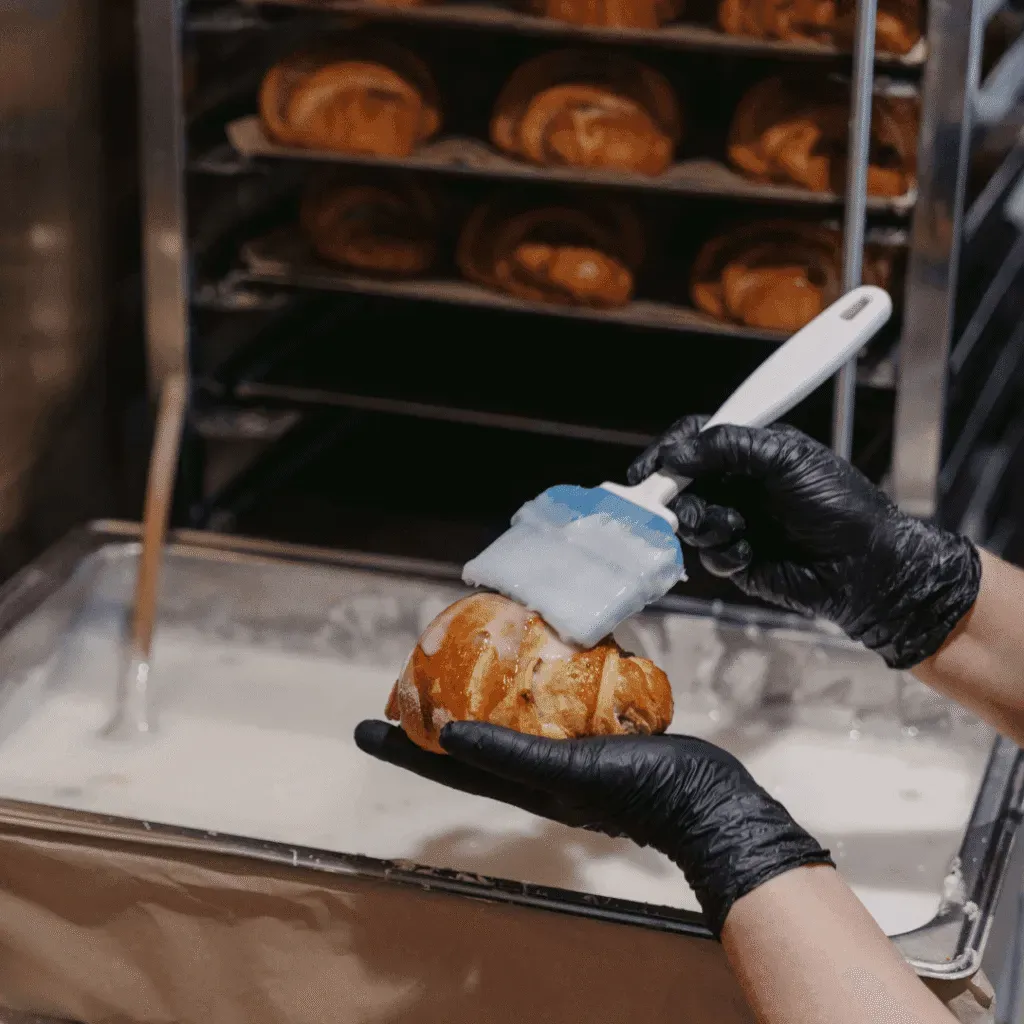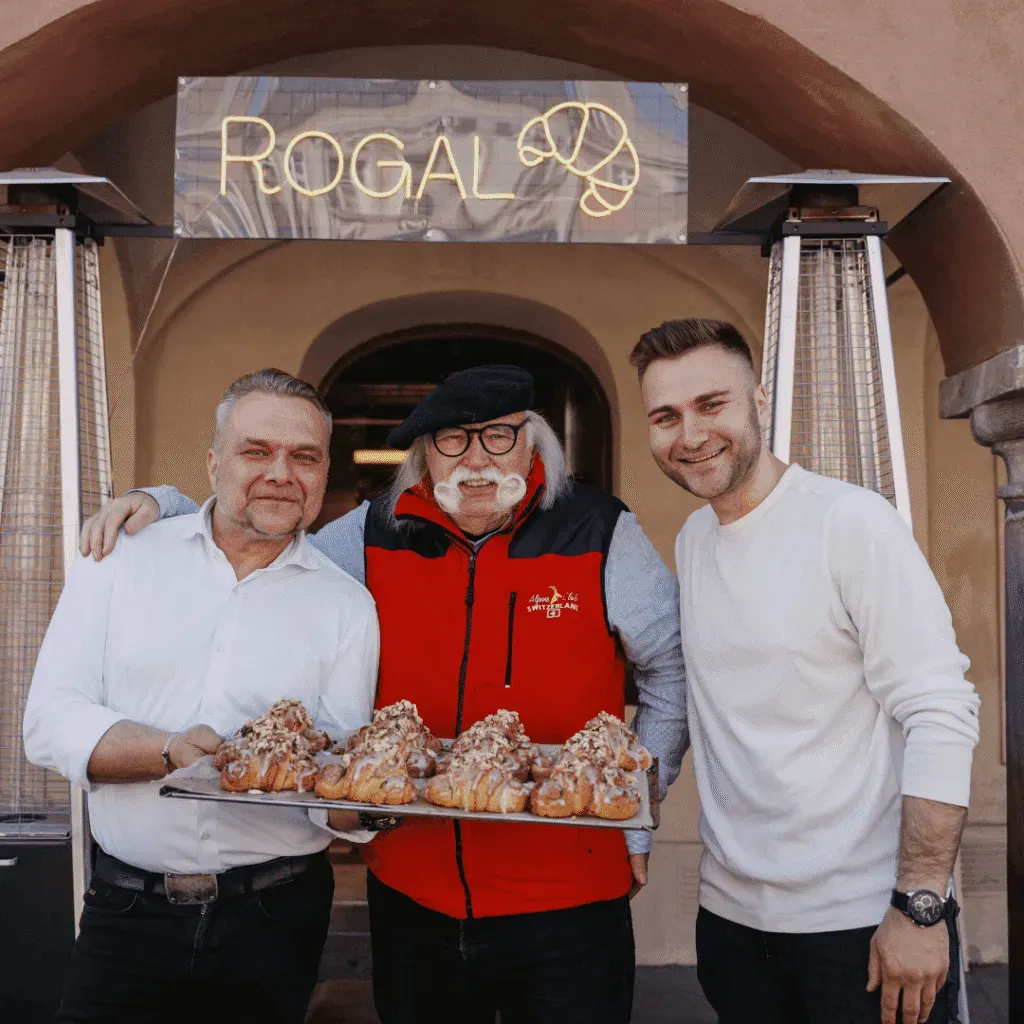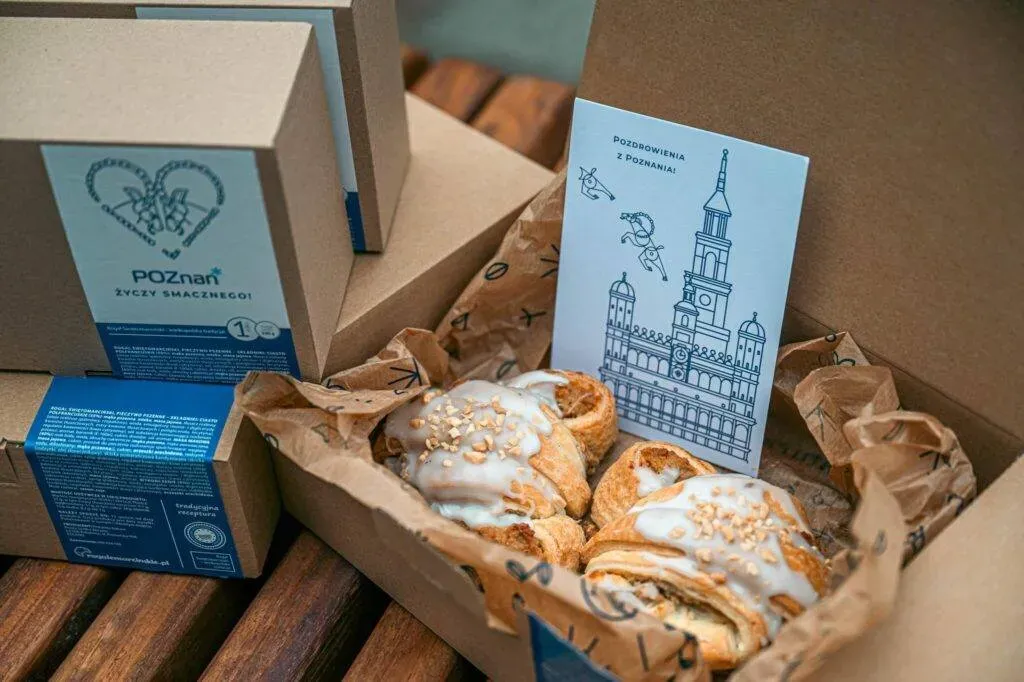The article below has been written and provided by Joanna Ochniak, member of Worldchefs Culture, Cuisine & Heritage Food Committee.
In Poznan, Poland, November 11th is not only the country’s National Independence Day – it is, above all, the Feast of St. Martin, the city’s patron and a symbol of compassion. On this day, St. Marcin Street turns into a vibrant parade of joy, music, and the irresistible aroma of freshly baked croissants. These pastries, known as Rogale Świętomarcińskie – St. Martin’s Croissants – have become a true emblem of generosity, unity, and the joy of sharing.
The Legend Behind St. Martin’s Croissant
Legend has it that long ago, a Poznań baker, inspired by the story of St. Martin sharing his cloak with a beggar, baked crescent-shaped pastries resembling horseshoes and gave them to the less privileged. That act of kindness began a tradition that has survived to this day. The St. Martin’s Croissant is more than just a pastry – it is a story about community and a reminder that good deeds always return to those who share them.

A Protected Culinary Treasure
Today, the St. Martin’s Croissant holds the Protected Geographical Indication (PGI) status, and its recipe – based on flaky puff-yeast dough filled with white poppy seeds, dried fruits, nuts, and almond essence – is carefully guarded by master confectioners. Every year in Poznań and across the Greater Poland region, between 250 and 400 tons of these croissants are baked – that’s about 1.5 to 2.5 million pieces.

During the November 11th celebrations alone, hundreds of tons are sold and enjoyed by locals and visitors, while the annual sales reach 500 to 700 tons. For a few sweet days each November, the scent of croissants fills the entire city, making Poznań, Poland, the true capital of this delicious tradition.
The art of baking St. Martin’s Croissants is a living tradition – one that continues to evolve and spark passionate discussions among bakers. Today, a friendly debate continues: should the dough be made with butter or margarine? Each choice has its devoted defenders. Some emphasize the authentic richness of butter, while others point to the historical use of margarine in earlier recipes. Perhaps this diversity itself is what keeps the tradition alive – because no matter the fat used, the St. Martin’s Croissant continues to unite people through its flavor and meaning.
Preserving Culture for the Future
As a member of the Worldchefs Committee on Heritage and Cultural Cuisine, I [Joanna Ochniak], am working on including the St. Martin’s Croissant on the UNESCO Intangible Cultural Heritage List – so that the world may discover its symbolic meaning and cultural value. The St. Martin’s Croissant is more than a dessert – it is a sweet manifesto of kindness, craftsmanship, and the human heart.
PGI Specification Summary – “Rogal Świętomarciński” (St. Martin’s Croissant, Poznań, Poland)
Official EU Registration: Regulation (EU) No 597/2013 of 19 June 2013
Protected Geographical Indication (PGI) – “Rogal Świętomarciński”
Region: City of Poznań and surrounding counties in the Greater Poland Voivodeship

Product Definition
A traditional, crescent-shaped confection made from puff-yeast dough and filled with a rich mixture of white poppy seeds, nuts, raisins, and candied fruit. The croissant symbolizes the horseshoe of St. Martin’s horse – a gesture of kindness that inspired Poznań’s most famous tradition.
Key Product Characteristics
| Feature | PGI Specification (Official EU Document) |
| Shape | Crescent or horseshoe, with glossy icing and chopped nuts on top |
| Weight per piece | 150 – 250 g |
| Dough ingredients | Wheat flour, milk, yeast, sugar, margarine, eggs, salt, lemon flavor |
| Filling ingredients | White poppy seeds (cooked & ground), sugar, margarine, sponge-cake crumbs, egg mass, raisins, nuts, candied or syrup fruits, almond flavor |
| Filling proportion | 30 – 40 % of total weight |
| Lamination process | “Three times three” folding method – 9 fat layers |
| Proofing | 45–90 min at approx. 30 °C |
| Baking | 180–200 °C for 15–20 min, until golden |
| Decoration | Sugar icing + chopped nuts (walnuts or hazelnuts) |
| Sensory profile | Flaky, layered, and slightly moist dough; filling with distinct white poppy-seed and almond aroma |
| Geographical link | Production restricted to Poznań and Greater Poland region; tied to the Feast of St. Martin (11 November) |
| Certification | Producers must hold valid PGI certification supervised by the Regional Inspectorate of Agricultural and Food Quality Control (WIJHARS) |

Sources
- Official Journal of the European Union – Regulation (EU) No 597/2013
- Product Specification: Rogal Świętomarciński PGI (CELEX: 32013R0597)














